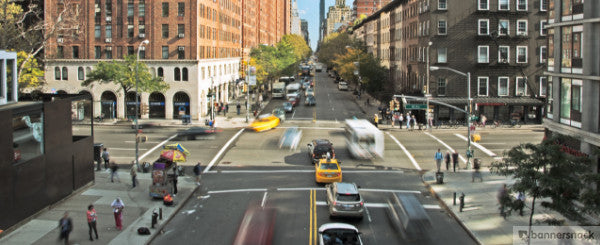
The process of collecting turning movement counts, the basis of most if not all of our transportation studies, has certainly evolved. Originally, the process consisted of sitting at an intersection corner and essentially taking notes with paper and a clipboard. Works for sleepy intersections with little traffic, but not effective for many downtown and suburban areas.
Then we moved to count boards, which kept track of time and made tracking cars as easy as pressing a button. Fast forward again and we are in the camera age. Our current camera, internally developed at Spack Enterprise and available for sale at CountingCars.com, weighs about two pounds and can record about 50 hours’ worth of data. No reason you should be sending anyone out with a clipboard anymore in this day and age.
So why should you change to using video for your counts? Here’s our top ten list:
- Replace Tube Counters
- Identify and Remove Anomalies
- Obtain a True Average for your Peak Hour data
- Fully Evaluate the Traffic Signal Warrants
- Establish Greater Credibility for your Study
- Keep the Video File for Backup
- Complete a Safe and Efficient Engineering Review
- Create Better Signal Timing Plans
- Give Yourself a Competitive Advantage (for Consultants)
- (ish) Obtain Longer Counts and Cover Other Days
In addition to the hardware, we have developed a video processing service called countCLOUD. Upload your video file to this system and we’ll get it counted fast with a guaranteed 3-business day turn-around.
